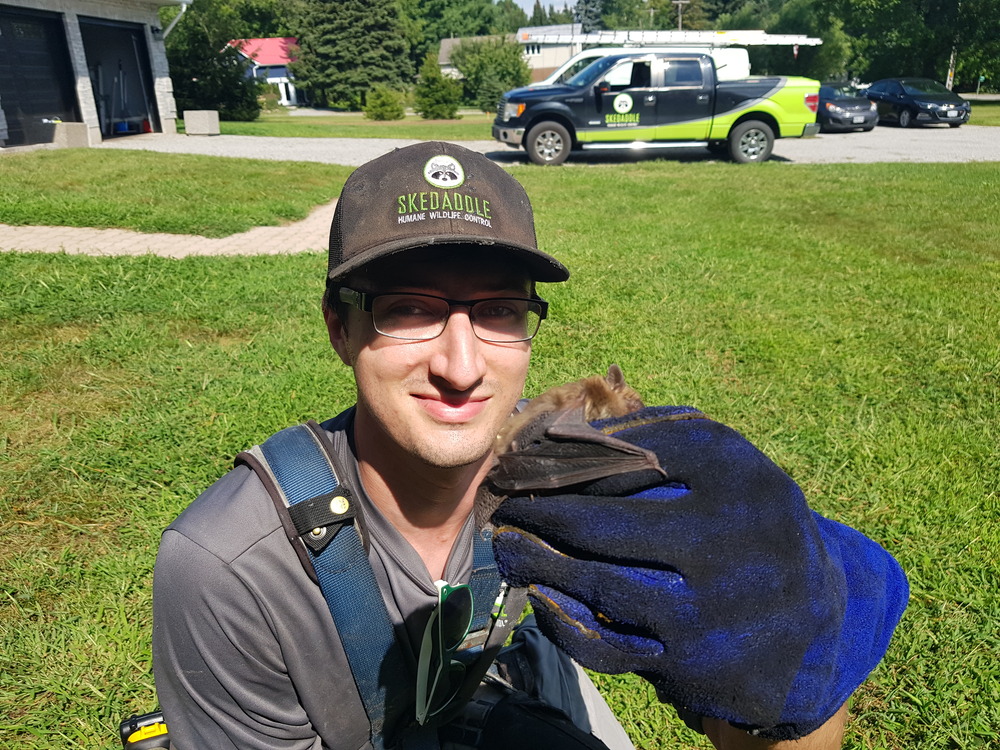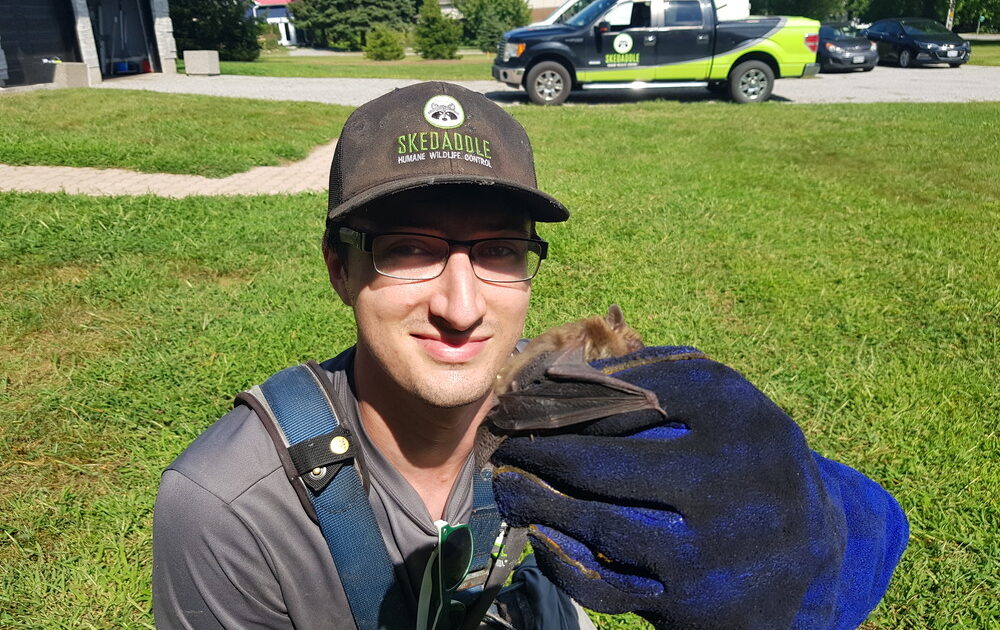Bat phobia is common worldwide, but these flying mammals don’t deserve the bad rap they get. Bats are shy creatures and — contrary to popular belief — are not aggressive and won’t bite unless they feel threatened or trapped. They will do their best to avoid contact with people. Though they are rabies carriers, the number of people who contract the disease is very small.
On the other hand, bats play a critical role in ecosystems and deserve our respect and protection. Of course, you don’t want bats sharing your living quarters with you. If you discover them in your home, it’s understandable that you want to know how to get rid of bats. However, they are legally protected species, and bat removal and bat exclusion services must be humane to ensure that bats are safe and allow them to continue their essential bat jobs.
Understand Why Humans Need Bats
Your vision of bats is likely influenced by a long history of vilifying the creatures in pop culture. In reality, these animals perform ecosystem services that we can’t do without, so getting rid of bats is not in our best interests. Here are four reasons we need these flying critters in our world.
1. Bats Eat Mosquitos
Bats help to keep the insect population in check. All the bats in Canada and the United States are insectivores. They dine daily on the flying critters we are not fond of.
A small bat species, such as the little brown bat, can eat as many as 1,000 or more insects nightly. Expectant bat mothers may munch on four times as many. So, we have bats to thank for preventing those pesky little insects from making our lives uncomfortable.
2. Bats Eat Agricultural and Garden Pests
These flying mammals also eat insects that damage crops and home gardens. Bats may save U.S. corn growers more than $1 billion annually on fertilizers and crop losses. The large brown bat, one of the species most found in domestic spaces, feeds on many insects that damage gardens. If you have these bats in your area, you might want to thank them for protecting your greens and the veggies you buy at the grocery store.
3. Bats Help Disperse Seeds
Some bat species help to maintain the greenery around the world. Fruit bats consume fruits from plants and trees. After digesting the good stuff, they get rid of the seeds, dispersing them in their droppings as they fly from one area to the next. Bat guano also serves as an excellent fertilizer, improving the survival rate of all sorts of green life.
4. Bats Are Pollinators
This incredible creature also plays a vital role as a pollinator. If you like bananas, mangos, agave or guava, you may want to reconsider your opinion of bats. They are responsible for pollinating these plants, along with an estimated 500 other plant species around the world. While bees and butterflies consume nectar from daytime flowering plants, bats take care of pollinating those that produce night-loving flowers.
Understand Bat Behaviour
In addition to being beneficial to humans, bats are relatively low-profile animals. They prefer seclusion and avoid daytime appearances. In fact, if you see a bat flying around during the day, chances are something is seriously wrong with the animal.
Where Bats Live
Most bats prefer to live in colonies located far from human habitation (in caves or abandoned mines, for example). The bats most likely to occupy human homes are the big brown bat and the little brown bat. These species have adapted to urban life. They often seek out attics for the warm, consistent temperatures and protection those spaces offer.
You may not detect a small colony of bats in your attic, but you may detect the movements of larger colonies or notice them leaving through your roof or attic vents at dusk. In the spring, pregnant females congregate in maternal colonies to raise their young. Your attic may be especially appealing for keeping pups safe.
What Bats Do for Winter
Most bats migrate away during colder months, as they are not fans of the low temperatures. So most of your winters will be bat free. The only bats you may see around during this time are the little brown bat and the big brown bat, but even the little brown bat is more likely to head off into the wild to hibernate during the cold months than to take up occupation in your home.
What Bats Eat
For those who harbour vampire-associated fears of bats, it is important to note that almost all bat species consume fruits, nectar or insects. Only three species of bats consume blood, and they get their supply from animals, so there is no threat to human beings.
Use a Bat Control Specialist Who Performs Humane Bat Removal
As experts in wildlife behaviour, Skedaddle’s team is well aware of the benefits that bats offer the world. We also know that this creature is not one to be feared. Bats deserve our protection and respect, which is why we practice humane bat control techniques.
Our bat removal method, for example, is designed to ensure that the flying mammals do not suffer and are not endangered. Our one-way doors allow bats to exit your attic or garage safely while ensuring that they are denied access if they try to return. All our bat exclusion methods are in keeping with the protective legislation that governs animal control and bat protection.
Get Help From Professionals Who Know How To Get Rid of Bats

Bats are fascinating creatures that should be protected, not feared. They prefer to stay out of sight and generally only bite in self-defence. They also perform essential jobs in human and environmental systems worldwide. However, you can protect them without opening your home to them.
If you’re currently experiencing issues with bats, keep calm and do not fear. If you want to know how to get rid of bats, get in touch with a Skedaddle bat control specialist today. We will ensure your home and family are protected for years to come.




